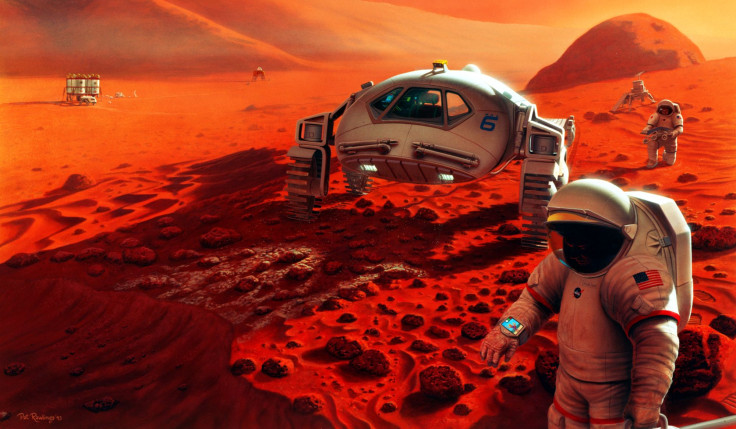NASA Report Highlights Contamination Risks Associated With Deep Space Manned Missions

As we stand on the cusp of becoming a multiplanetary species, NASA wants to make sure that the fate that befell the invading Martians in H.G. Wells’ science-fiction masterpiece “The War of the Worlds” is not one that befalls the real, present-day Martians — if there are any.
In the novel, the belligerent aliens are killed by Earthly microbes, against which they had no immunity. In real life, while the possibility that such aliens would ever land on Earth is extremely slim at best, it is not beyond the realms of believability that we humans — carriers of hundreds of billions of microbes — may soon begin contaminating the planets and moons in our solar system with Earth-based organisms.
That is, unless clear-cut operational procedures and guidelines are laid out to prevent such a thing from occurring. And the first step toward drafting such guidelines is acknowledging the gaps that exist in our knowledge of how to prevent biological cross-contamination of Earth and other worlds during human missions to different celestial bodies.
This is the issue NASA has addressed in a report titled, “Planetary Protection Knowledge Gaps for Human Extraterrestrial Missions.”
“We already have samples of Mars, and some comets and asteroids, here on Earth,” Bette Siegel, program executive and planetary protection expert in NASA’s Human Exploration and Operations Mission Directorate, said in a statement released Wednesday. “Some comet and asteroid samples were collected by spacecraft and returned directly to Earth, but many others that have spent millions of years in space regularly fall to Earth. These are quickly contaminated by Earth organisms once they hit the ground.”
The report, which summarizes the proceedings of a three-day workshop held last year, addresses two areas of concern — forward contamination, wherein Earth-based microbes contaminate extraterrestrial samples on other celestial bodies, and backward contamination, which refers to the possibility that extraterrestrial microbial life returned by a space mission could propagate on Earth.
In the report, researchers from NASA and the Committee on Space Research (COSPAR) adumbrate 25 gaps in our knowledge that need to be addressed in order to prevent both forward and backward contamination. As the report highlights, significant gaps still exist in creation of compliant hardware systems, technologies, procedures for collecting samples, and in establishing decontamination procedures.
For instance, one of the most relevant issues relates to pinning down the exact amount of “acceptable” microbial contaminants that would inevitably be vented out during any kind of extravehicular activity on Mars, and how this amount would be monitored.
“NASA and COSPAR hope that by closing the knowledge gaps outlined in the report of the previous workshop, we will be able to establish clear quantitative guidelines on planetary protection that will lead to eventual international consensus standards for human missions beyond Earth orbit and particularly in support of a collaborative journey to Mars,” Gerhard Kminek, the European Space Agency’s planetary protection officer and the chair of COSPAR’s Panel on planetary protection, said in the statement.
© Copyright IBTimes 2024. All rights reserved.





















